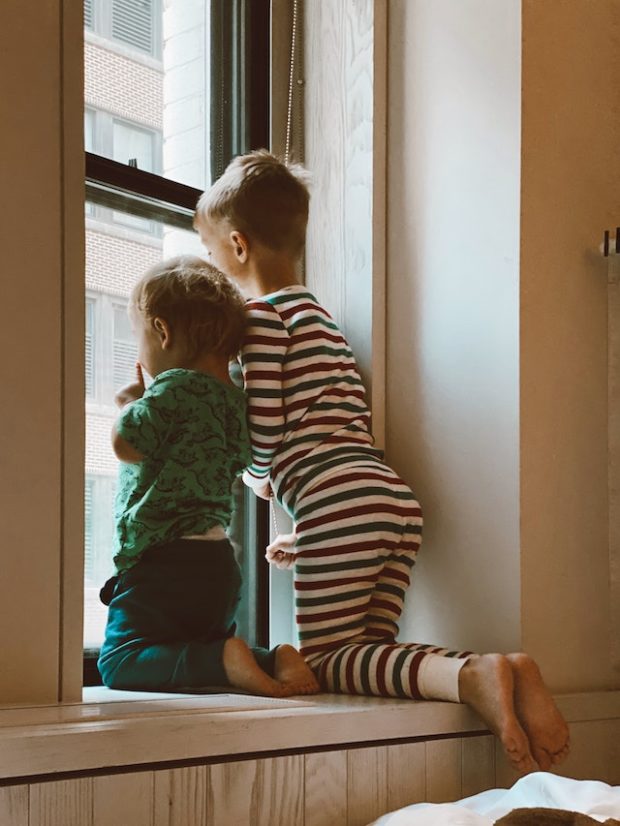 Having a sibling can be an amazing experience. Whether you are close with your siblings or not, you may have noticed some similarities between the two. However, what if you don’t look like each other? Why is that? Does this mean there’s something wrong with one of you? Absolutely not! It’s perfectly normal for siblings to look different from one another.
Having a sibling can be an amazing experience. Whether you are close with your siblings or not, you may have noticed some similarities between the two. However, what if you don’t look like each other? Why is that? Does this mean there’s something wrong with one of you? Absolutely not! It’s perfectly normal for siblings to look different from one another.
The age-old question of why siblings often look different from one another has been pondered for centuries. While there are several potential answers to this mystery, the truth is that several factors can affect how much siblings resemble each other. From genetics to environmental influences, it’s possible to uncover why your sibling doesn’t look like you.
In this article, we’ll cover some of the more common reasons why siblings can look very different from one another. By understanding how these factors influence your sibling’s appearance, you can better appreciate and celebrate the unique beauty in each of you! So let’s dive into why your sibling doesn’t look like you.
Various Genetic Factors
DNA stands for deoxyribonucleic acid, found in almost every cell in your body. It contains genetic instructions that tell our bodies how to develop and function. Passed down from our parents, DNA plays a vital role in determining physical characteristics such as eye color, hair color, skin tone, and even facial features – all of which can differ significantly between siblings.
Your genes are responsible for many physical characteristics that make up who you are – including those we mentioned before, such as eye color, hair color, skin tone, and facial features.
While some of these traits are determined by environmental factors (like diet), most come from our genetics. Each gene contains instructions on how particular body parts should develop; they essentially act as a blueprint telling us what traits we should have inherited from our parents. Fortunately, DNA tests are readily available these day.
For example – let’s say both your parents have brown eyes; there is a 50/50 chance their children will also have brown eyes or another color altogether (which can be passed down from grandparents). This same concept applies to all the physical characteristics we mentioned earlier. So even though two siblings may come from the same parents, they can still look very different due to variations in their genes.
Genes play a huge role in determining why siblings don’t always look alike – but they also determine which similarities exist between them.
For instance, while two siblings may not share the same shade of hair or eye color, they might still exhibit similar facial features like cheekbones or jawline shapes. This is because those traits are more likely to be shared across family members than others since they come from dominant genetic markers within each generation.
Environmental Factors
The environment in which siblings are raised can also influence how much they resemble each other. For example, if one sibling is exposed to more sunlight than the other, their skin tone may be drastically different. Similarly, siblings who eat different diets or engage in various activities can also look quite different from one another due to the physical effects of these environmental influences.
Additionally, if one sibling eats a more nutritious and varied diet than the other, the latter might grow to be less tall or strong. Or if one sibling is exposed to more pollution or harsh weather conditions than the other, their skin might look different, too.
The Impact of Time and Age on Appearance
Another factor to consider is the passage of time and the effects of age. As siblings grow older, they can look more and more different from one another due to changes in their appearance that come with age.
For example, one sibling may become taller than the other or develop a different body shape as they get older. Similarly, as wrinkles and lines form over time, the siblings’ facial features may appear more distinct.
Other Reasons Why Your Sibling May Not Look Like You
In addition to the factors mentioned, there are other potential reasons your sibling may not look like you. For example, siblings may have drastically different personalities, which can affect their physical appearance subtly. Similarly, if one sibling is exposed to more trauma or stress than the other, this can lead to distinct differences in their physical appearance.
Conclusion
As siblings age, the differences in their appearance can become more and more pronounced. This is due to genetic, environmental, and age-related factors contributing to why siblings don’t always look like one another.
While this may make them appear unique, it’s important to remember that, at the core, each sibling still shares the same genes and family traits. So even when siblings look different from one another, there are still plenty of similarities between them.
By recognizing these similarities and embracing the differences, families can build strong bonds and enjoy each other’s company regardless of how they may appear.









![Daily Bite [Make]: Philly Cheesesteak Stuffed Bell Peppers](https://dashofwellness.com/wp-content/uploads/2013/01/Philly-Cheesesteak-Stuffed-Pepper-Daily-Bite-1-100x70.png)
